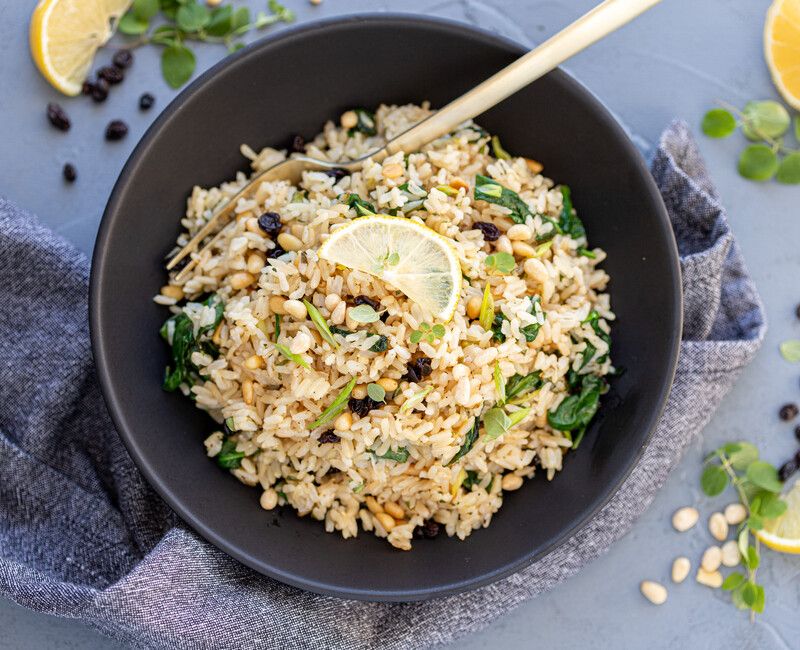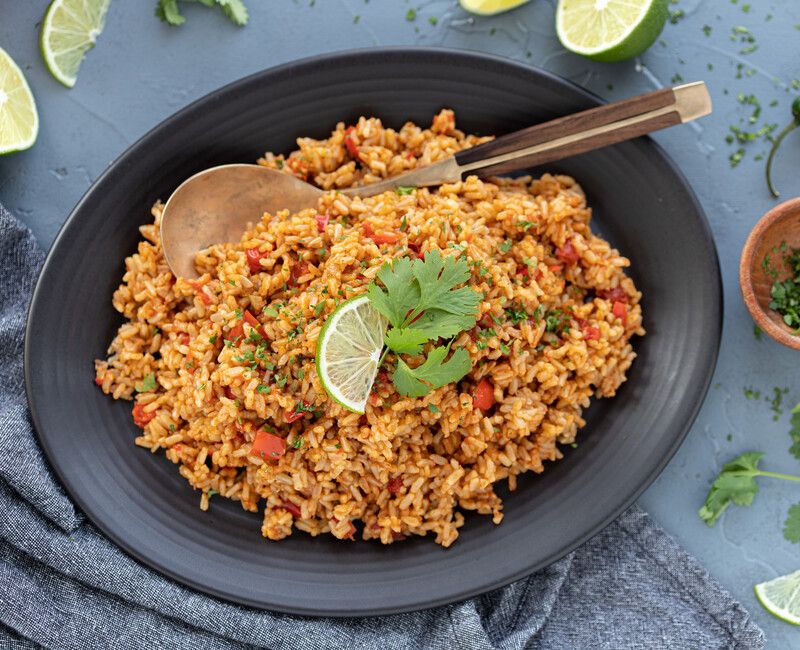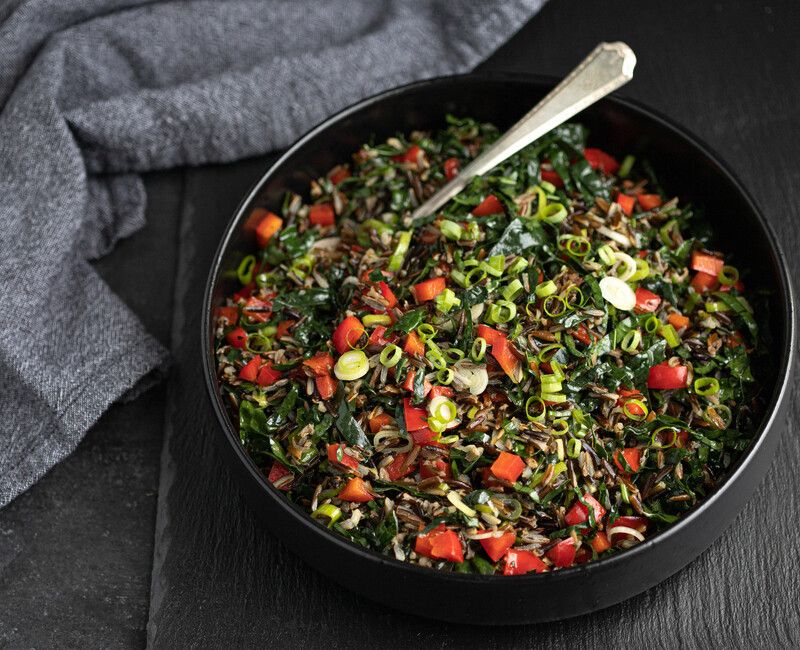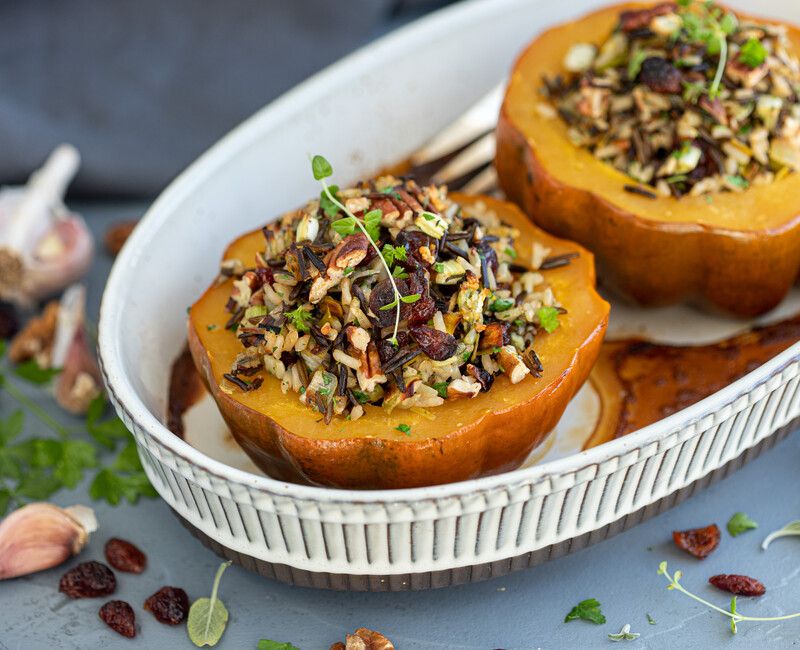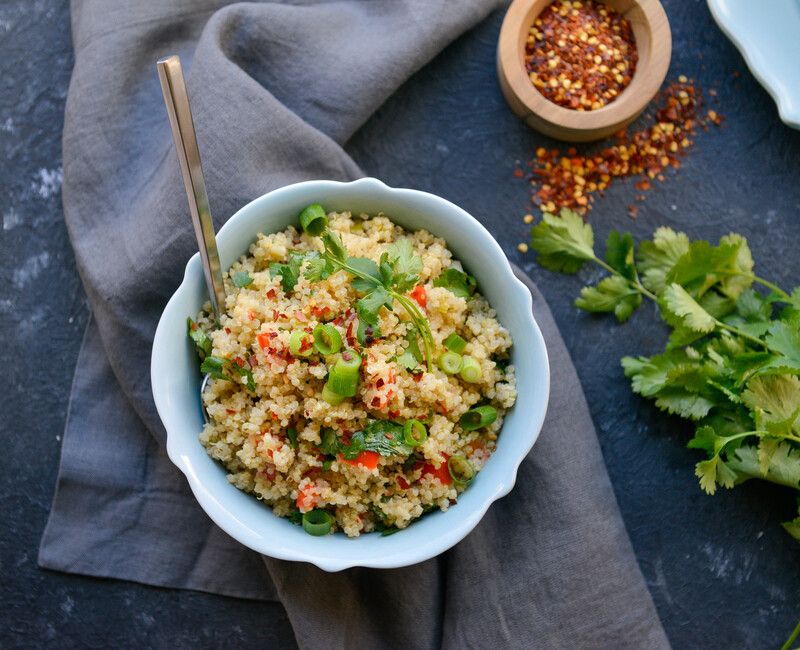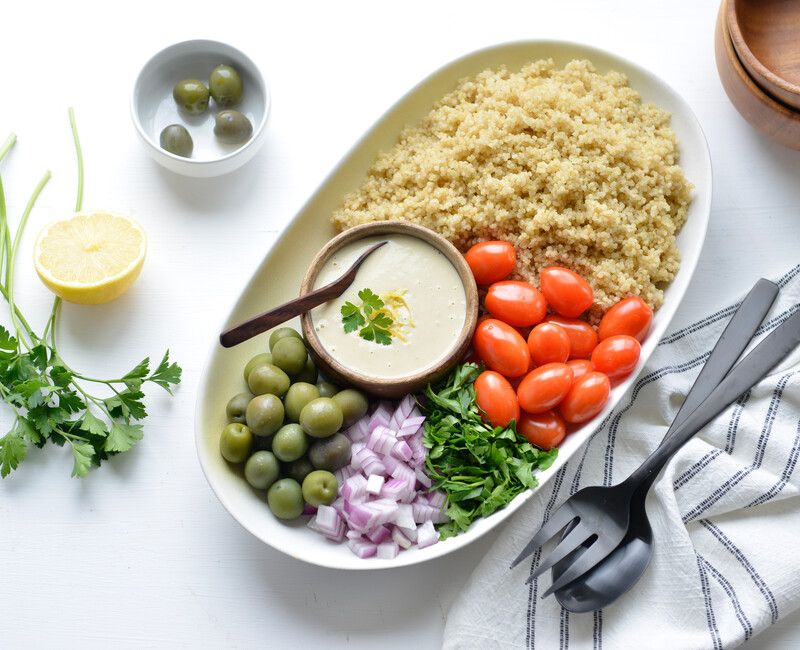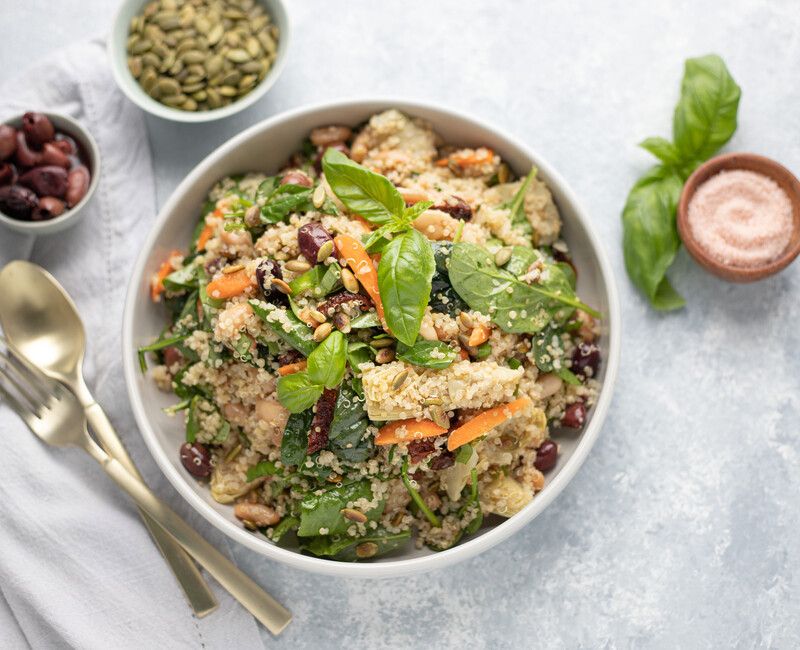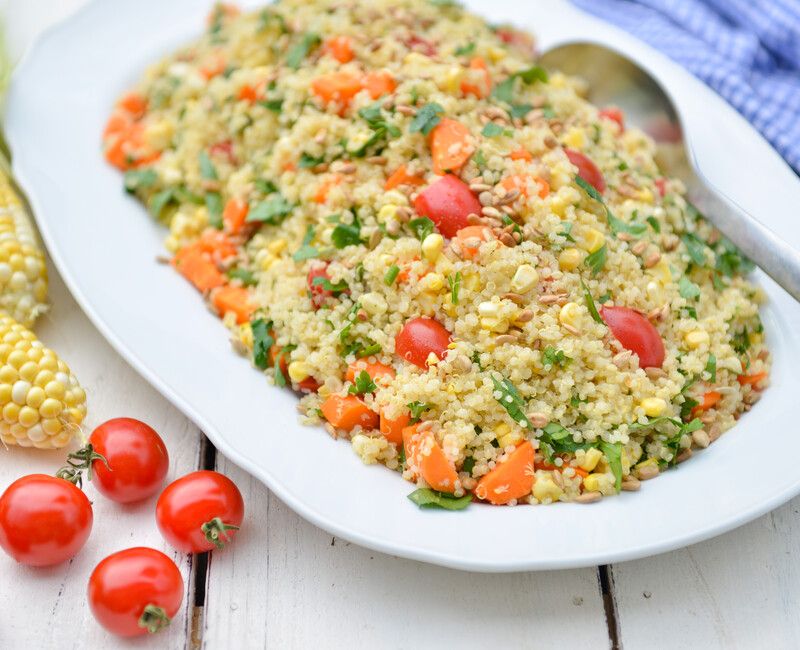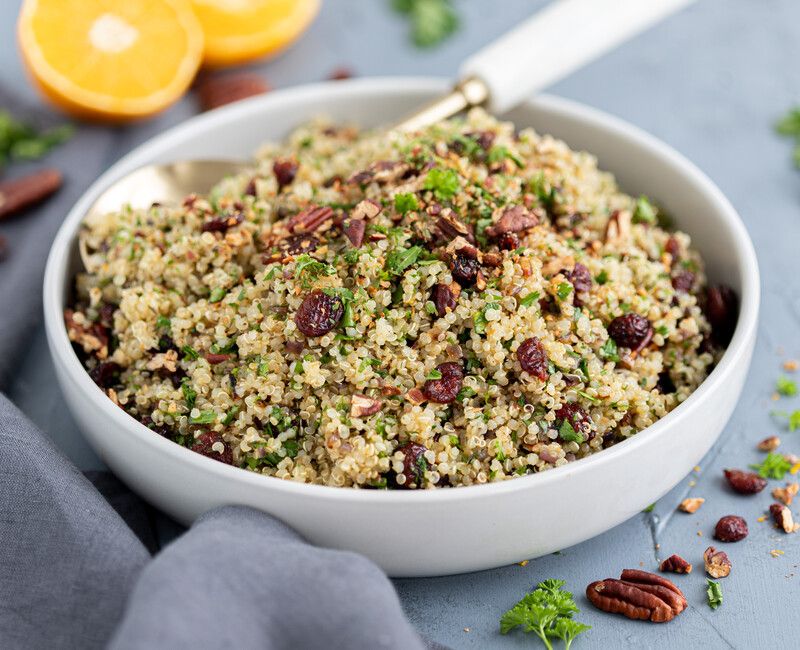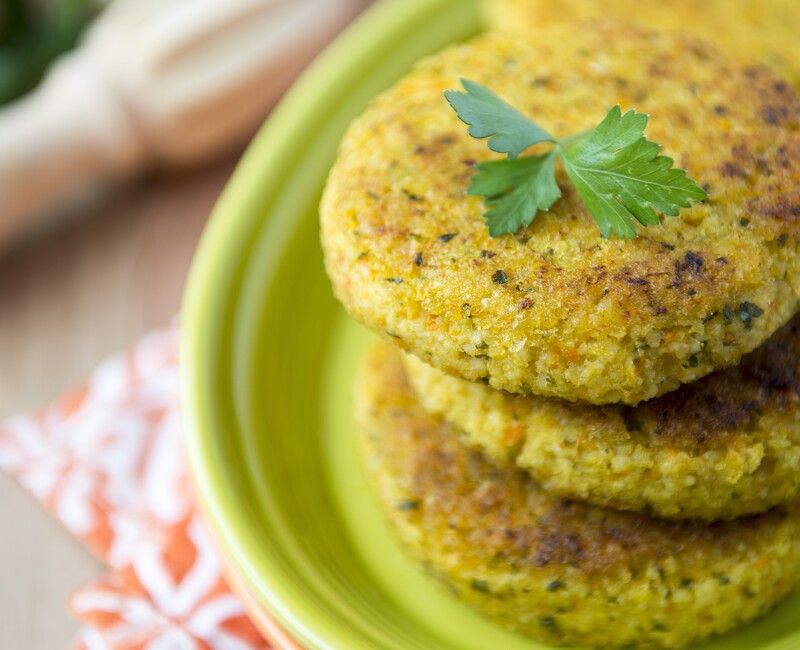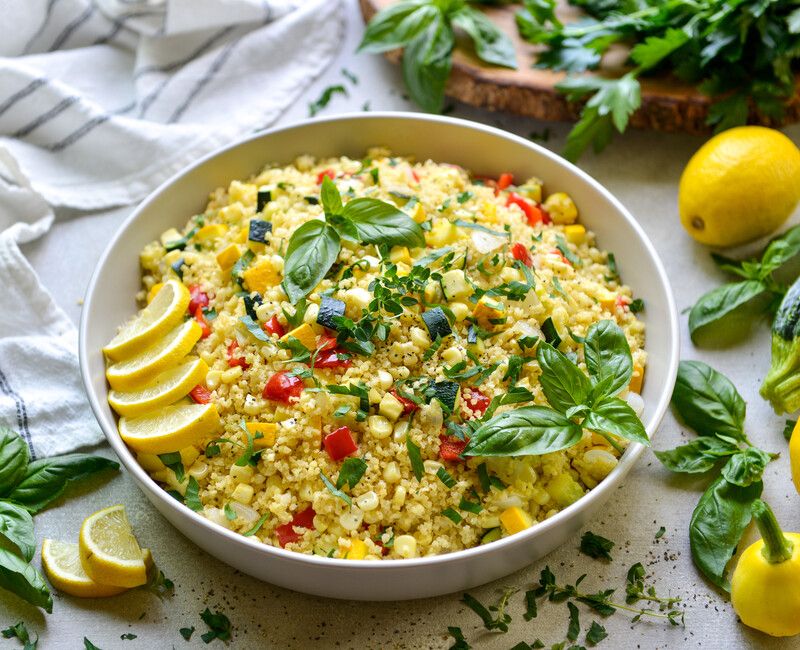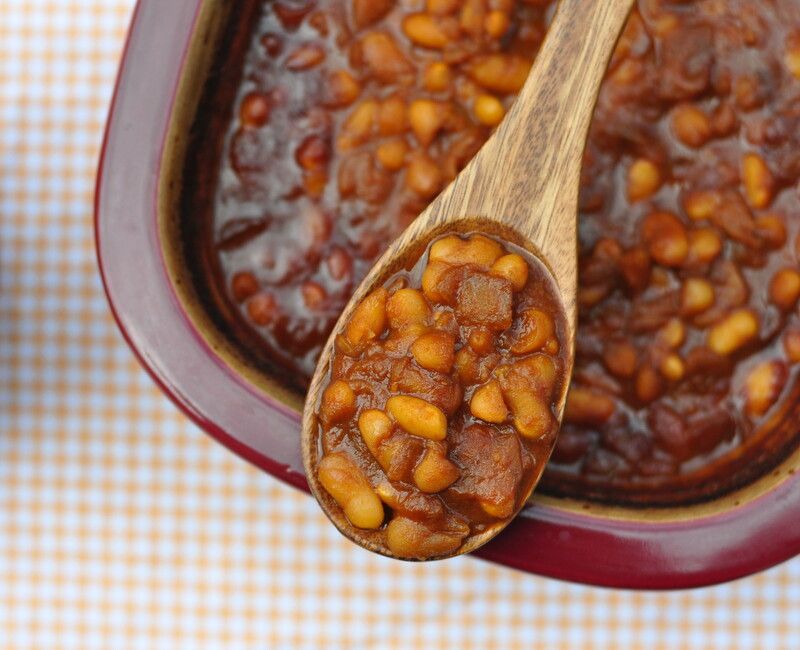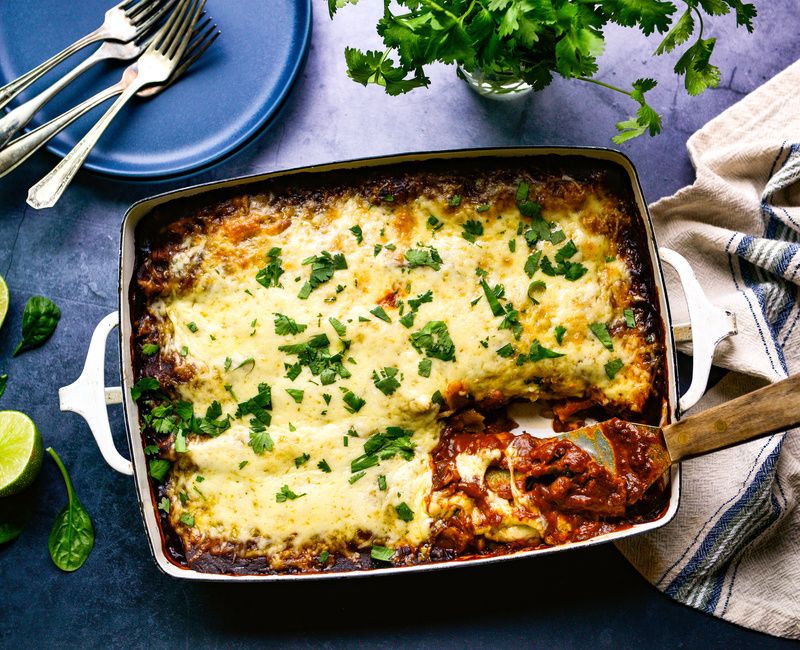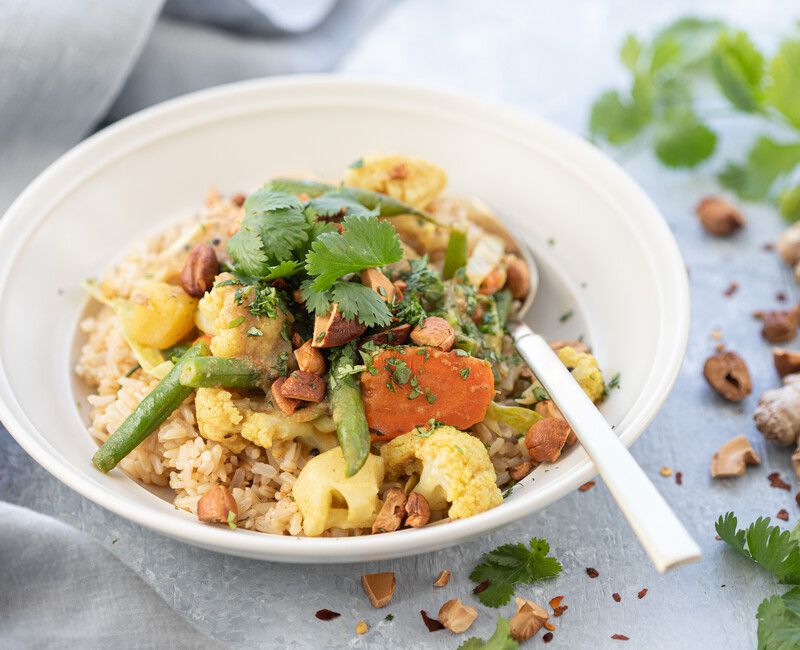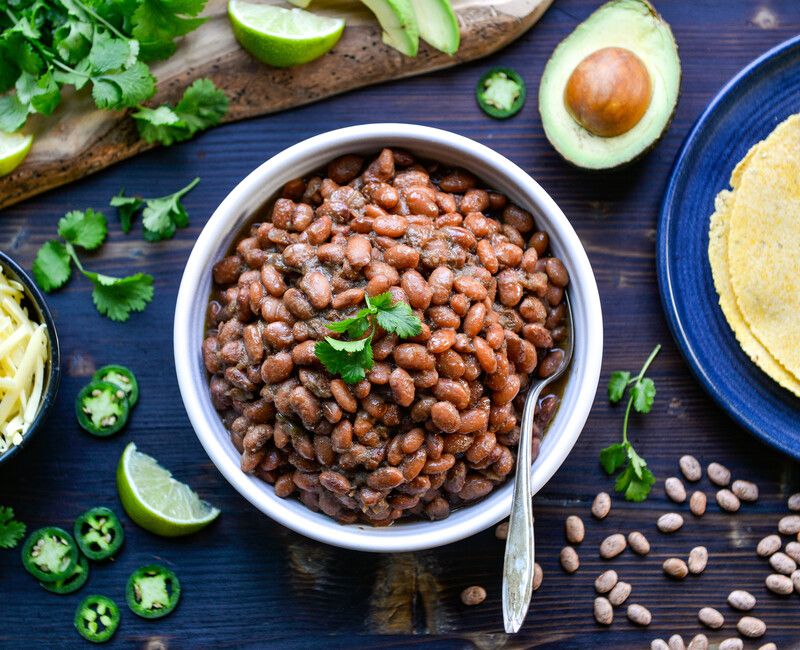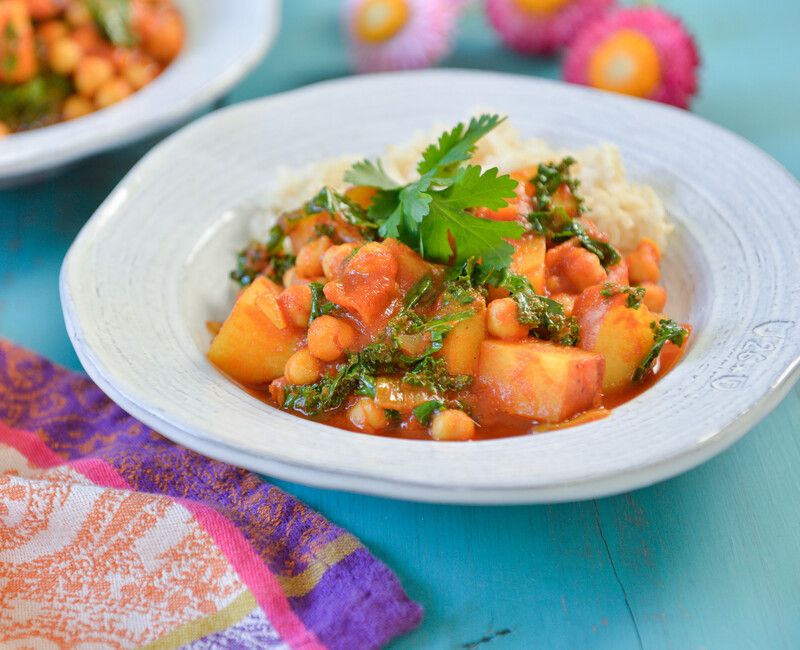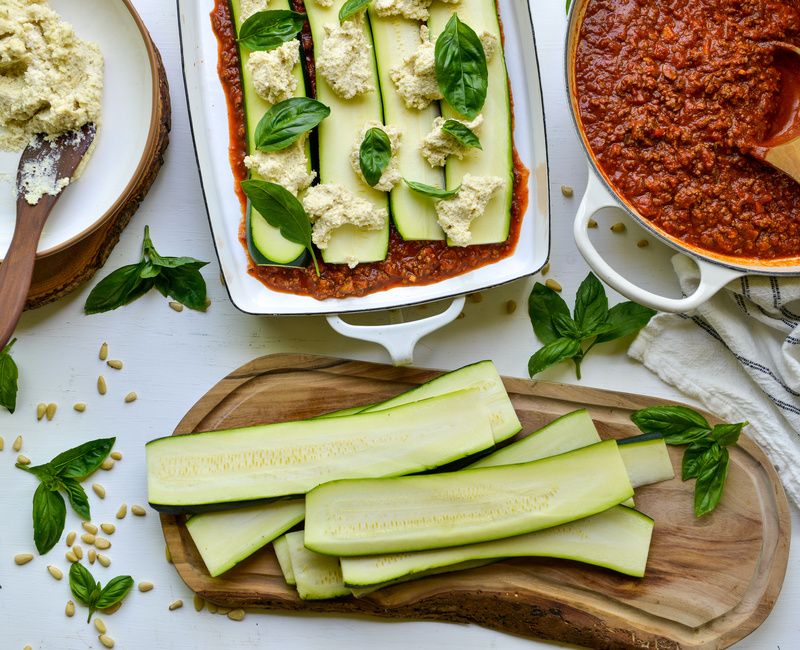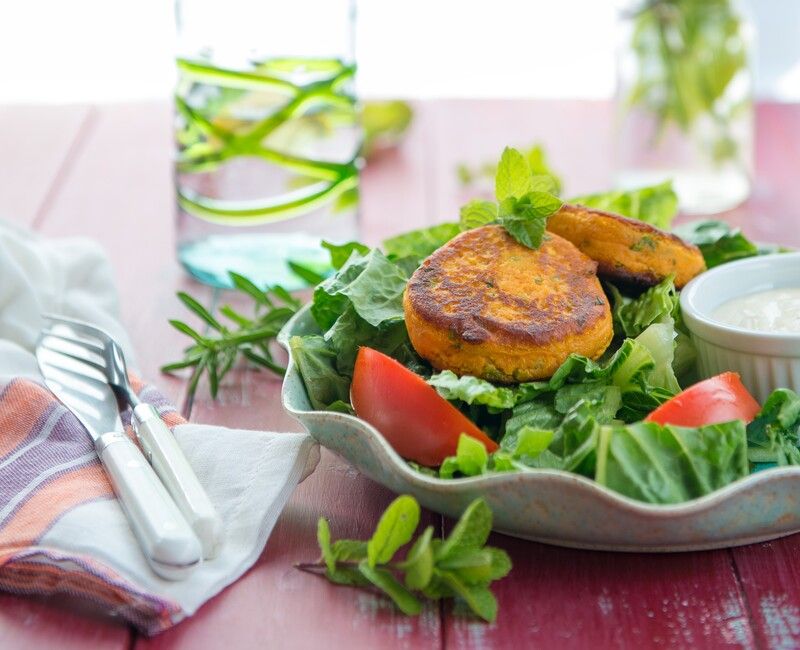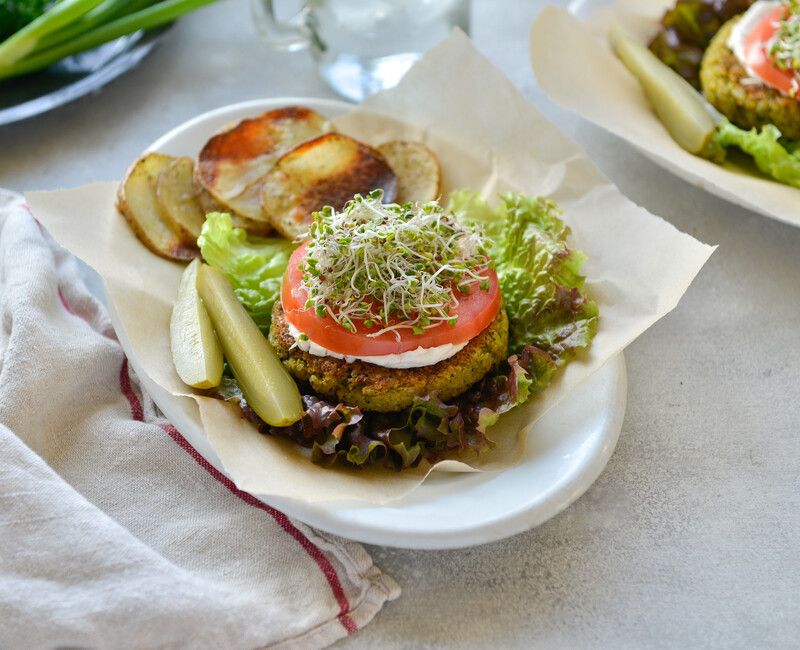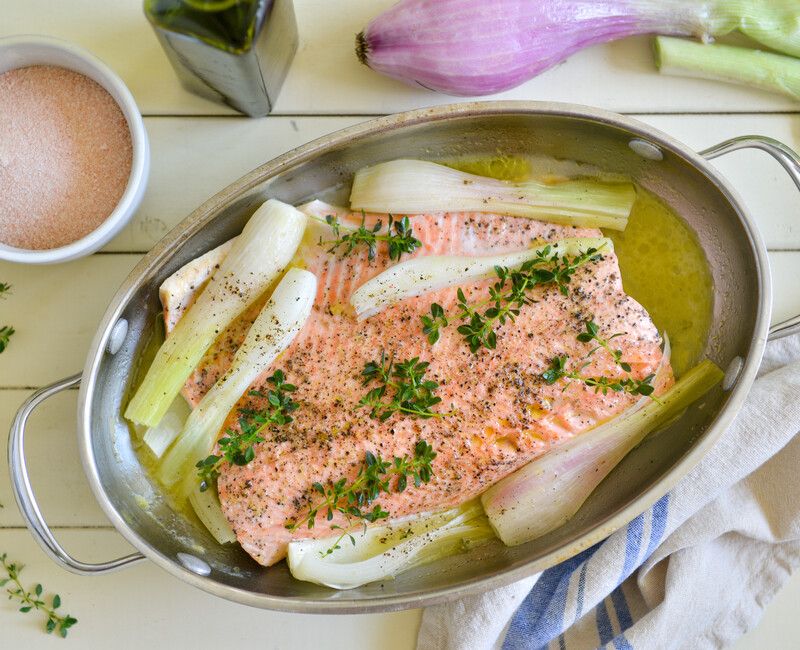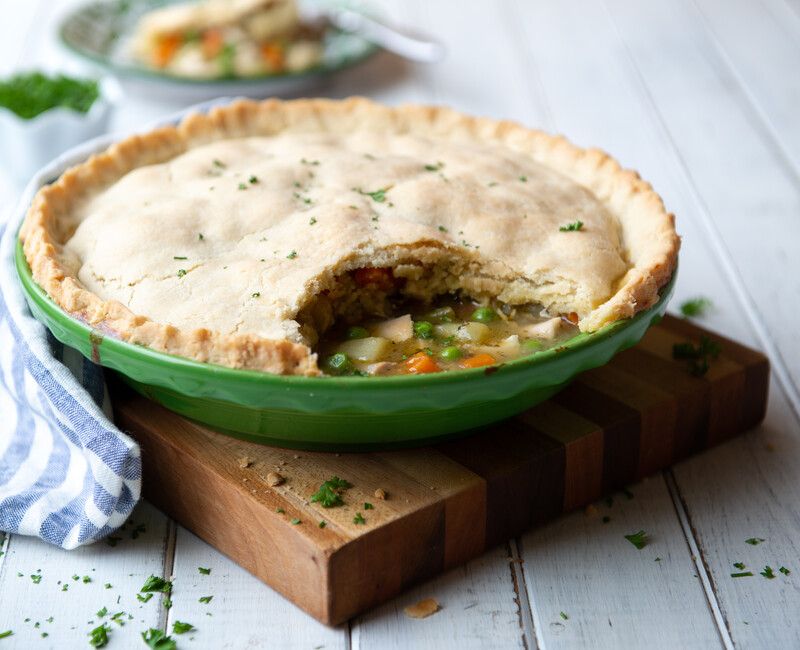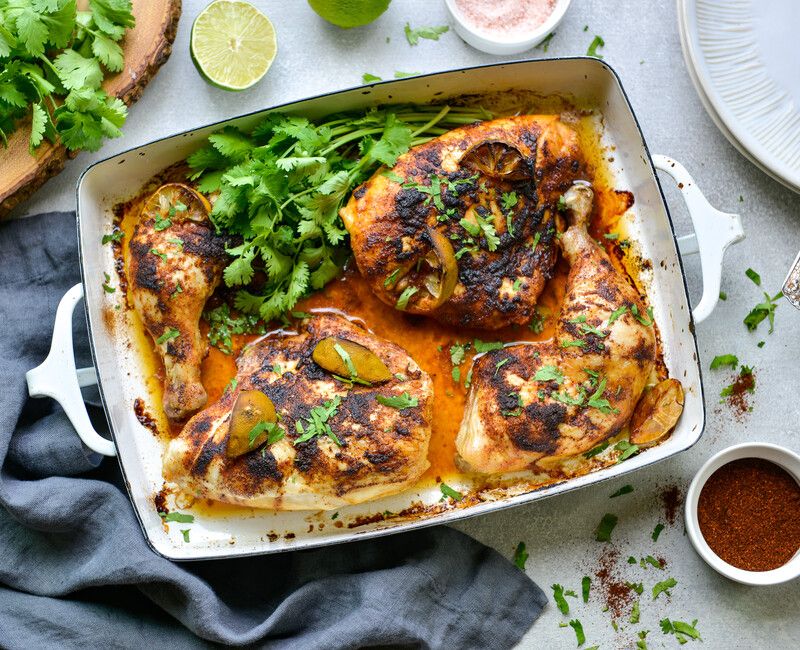Teff is a very tiny grain that is available in three colors―white, red, or brown⎯each with its own distinct flavor. Teff originated in Africa where it was once a foraged wild grass before it was cultivated as a staple grain for the Ethiopians. It is now grown in the Snake River Valley of Idaho.
Serve this colorful, nutrient-dense noodle dish as part of a balanced dinner, or pack it in your child's lunchbox! It also make a perfect potluck dish. Buckwheat does not contain any gluten even though the name implies so. Though if you are gluten-sensitive, be sure to use 100% buckwheat soba noodles that are also certified gluten-free. Brown rice noodles can easily replace the buckwheat noodles in this recipe if needed.
Serve this easy-to-make dish with some grilled chicken or fish, and steamed broccoli for a complete meal. Brown rice noodles come in a variety of shapes and sizes, any of which can be used in this recipe. You can easily substitute the cashew butter in the sauce for organic unsalted peanut butter or almond butter if you would like.
This tasty rice dish is delicious served with a Vegetable Curry and Red Lentil Dal. If you cannot find brown jasmine rice in your area, then use brown basmati rice instead.
Serve this dish as part of a light summer meal or for a simple lunch. If you cannot find French lentils you may substitute green or brown lentils instead. This salad will keep in a covered container in the refrigerator for up to 5 days.
Serve this Mediterranean-style dish with the Herb Roasted Halibut and this Raw Cauliflower, Lemon, and Leek Salad for a complete meal.
Serve this flavorful brown rice dish with cooked Black Beans and Guacamole for a nutritious vegetarian meal!
This dish is a fun way to dress up plain brown rice. Use brown basmati rice if you cannot find brown jasmine rice. Using leftover cooked rice will significantly cut down on cooking time! Serve with any type of Thai coconut curry, grilled chicken, or sautéed tofu.
This zesty grain salad is simple to prepare and full of detox-supportive nutrients. Raw kale contains glucosinolates, sulfur-rich compounds that help activate liver detoxification enzymes and support cellular renewal. Wild rice adds a hearty texture along with fiber, minerals, and antioxidants that promote steady energy and healthy digestion. The combination of raw kale and red pepper with cooked wild rice creates a vibrant balance of flavor and texture. I love using green curly kale with the ribs removed for this recipe.
This recipe is great for Holiday gatherings or as a warm autumn meal. Try adding some sliced organic sausages to the rice mixture for a little extra flavor and protein if desired. Cooked lentils also make a great addition to the stuffing!
This yummy Thai style quinoa dish is delicious served on its own, or serve it with the Raw Thai Kale Slaw and baked wild salmon for a balanced meal.
A composed salad is one in which ingredients are arranged on a platter instead of being tossed together. Composed salads are a beautiful way to present nourishing ingredients! I like to use the bright green, round castelvetrano olives in the recipe, though any high quality olive will do. Often times we will steam a large amount of fresh greens, such as chard or kale, and add it to this meal. Other lovely additions are Balsamic Roasted Beets, or Massaged Kale.
This quinoa salad is bursting with fresh Mediterranean flavors. It is great to take to a potluck or dinner party! This grain dish is best served shortly after it has been made, otherwise the pumpkin seeds will begin to lose their “crunch” after a while. You may use any type of white beans, though I prefer to use cannellini beans beans in this dish.
This zesty salad bursts with flavor from fresh lime juice, ground cumin, and fresh cilantro—making it the perfect energizing meal for warm days or anytime you need a lift without the weight of a heavier dish. Rich in fiber and plant-based protein, it’s deeply satisfying yet light on the body.
This quinoa salad makes a great addition to any summer picnic. Any fresh summer vegetables that you have on hand work well here. Try adding diced summer squash, fresh shelled peas, or thinly sliced kale leaves. You can use either leftover cooked sweet corn or raw corn cut right off the cob. They both work great, but I prefer the taste and texture of the raw corn.
This flavorful grain salad is perfect for the holidays. It can be made up to a day ahead of time, just wait to add the pecans until ready to serve.
You will need a food processor to make these. You can make the patties up to 3 days ahead of time and store them in between pieces of waxed paper in a storage container in your refrigerator. Serve millet patties with Barbecued Navy Beans and thinly sliced green cabbage (or napa cabbage) tossed with my Cilantro Vinaigrette.
Serve this vegetable-rich whole grain dish with a fresh garden salad tossed with my Herbal Vinaigrette for a simple summer meal.
Polenta is made from coarsely ground cornmeal. It can be served with fish or chicken dishes or simply with a red sauce on top of it. You can also double this batch, pour it into a 9x13-inch pan, and then use it as an alternative gluten-free pizza crust. Simply top the polenta with pizza sauce, your favorite sautéed vegetables, and some organic grated cheese if you wish. Follow the directions for baking below.
Baked beans have always been part of our summer family picnics. We like to serve them with a cabbage slaw such as the Kohlrabi Coleslaw and a potato salad, such as the Purple Potato Salad. Baked beans freeze well, so if you have leftovers you cannot finish within a few days, try freezing the remainder in portion-sized containers. Just reheat in a small covered saucepan on the stove.
Casseroles are oh-so comforting to serve on a cold winter’s evening. I like to serve this over cooked quinoa with sautéed dark leafy greens or sautéed cabbage or with an arugula salad. Black beans are high in polyphenols called anthocyanins. This is what gives black beans their dark purplish-black color.
A simple homemade enchilada sauce with dried ancho chili peppers, ground cumin, and garlic balances the enchilada filling made from creamy baked butternut squash and cooked pinto beans. Top with grated sharp cheddar or jack cheese for a nourishing, vegetarian meal! Serve with a simple arugula salad with a Lime Vinaigrette.
This is a spin on the classic Southern red beans and rice. Here I use cooked quinoa and cooked beans for a meal than can be made in about 15 minutes. If desired, you can add about two organic chopped andouille sausages to the onion and pepper mixture. Serve with braised collard greens or steamed broccoli for a balanced meal. If you don’t have any cooked quinoa on hand already, you’ll need to cook one cup for this recipe.
Chana Masala is a very common North Indian dish typically served over basmati rice with a yogurt-cucumber sauce on top. My version might not be authentic, but it is still lip-smackin’ good! Sometimes I will add chopped red potatoes and spinach to this recipe too. I usually serve it over brown basmati rice with a slew of other Indian dishes and a bowl of Raita on the side.
Curry is definitely a staple in our house. Our children will eat anything flavored with curry spices. This quick curry can easily be whipped up for a weeknight dinner. Try adding cooked garbanzo beans, cubed tofu, or chopped chicken breasts to boost the protein. Use any vegetables you have on hand, just keep in mind the total amounts. You may need to add extra coconut milk, water, and spices to compensate for any additional ingredients.
This is one of our family’s favorite weekday meals. We serve the beans over cooked brown basmati rice or with sprouted corn tortillas and then offer a variety of toppings such as Salsa Fresca or Pico De Gallo, sliced avocados, thinly sliced romaine lettuce, sliced black olives, and fresh lime wedges.
This recipe is very quick to prepare and requires few ingredients. Mung beans don’t require any soaking so you can easily get dinner on the table with little thought beforehand. This recipe is very versatile. Add different vegetables towards the end of cooking, such as, chopped zucchini, chopped tomatoes, diced hot peppers, fresh or frozen peas, chopped cauliflower, or whatever you have on hand that needs to be used up! Serve this nutritious and easy to digest dal over cooked long grain brown rice.
This recipe is one of my children’s favorite meals. It is very quick to put together if you don’t have a lot for time to prepare dinner. About once a month I cook a very large pot of chickpeas. Some of the cooked beans get made into hummus, some into bean soups and stews such as this one, and the rest I freeze in 2-cup containers to have on hand for busy weeknight meals. Feel free to add about 4 cups of chopped greens to this recipe near the end of cooking. Spinach, kale, or chard are our favorites.
This recipe is a great way to make use of the abundance of those extra large zucchini growing in your garden or from the Farmer's Market! Using thin, long strips from large zucchini is a way to create simple, nutritious gluten-free lasagna noodles. The Pine Nut Ricotta recipe below is also great dolloped on top of a gluten-free pizza crust spread with freshly made pesto. Serve with a green salad for a nourishing grain-free summer meal!
I like to make this very quick meal for lunch. It is great served over cooked quinoa or brown rice. If I don’t already have brown rice cooked, I will cook a pot of quinoa because it cooks in 15 minutes. If I have more time and want to make this meal more elaborate I will serve it drizzled with the Ginger Plum Sauce or Garlic Ginger Peanut Sauce or Garlic Ginger Kudzu Sauce.
I like to serve these easy falafels on a weeknight when my cooking time is limited. As long as I have cooked sweet potatoes in the fridge, this recipe can be made in about 10 minutes. Serve them over a bed of lettuce and cooked quinoa with a Tahini Dressing. To mince the green onions and parsley, I just process them in my food processor for about 30 seconds. You will need 1 large or 2 small sweet potatoes for this recipe.
If you have brown rice and garbanzo beans already cooked, these burgers can be made in a snap! You just need a food processor. I like to serve these gluten-free bean burgers with lettuce leaves or napa cabbage leaves as “buns.” Serve with roasted potatoes or roasted sweet potatoes for an easy plant-based meal!
The following soy-free marinade recipe works as a sauce for steamed veggies and rice, or as a marinade for chicken and other types of fish. Add about a tablespoon of arrowroot powder or kudzu, whisk together, and simmer over low heat to create a thicker sauce. Serve salmon over mashed sweet potatoes and top with sautéed mustard greens and oyster mushrooms that have been seasoned with coconut aminos and brown rice vinegar.
Serve this easy poached salmon recipe with the Lemon Millet Patties and the Shaved Fennel and Arugula Salad for a light spring meal. I prefer to use coho salmon for this recipe because it is thin and cooks evenly in the poaching liquid.
Tandoori food is traditionally cooked in extremely hot clay ovens throughout India. Here I use traditional tandoori seasonings, though I bake the salmon in a regular oven. The tandoori seasoning I use is made from ground coriander, cumin, sweet paprika, garlic, ginger, cardamom, and saffron. Combined with a little coconut milk and lemon juice, this salmon recipe is very fresh and flavorful! Serve with whipped sweet potatoes and a crunchy romaine, cucumber, and tomato salad for a balanced meal.
This is one of my favorite ways to prepare fish in springtime and summertime, when halibut is in season. My garden beds are blossoming with fresh herbs and this is a perfect way to use them up. Serve this fish with a variety of sautéed summer vegetables along with a large garden salad.
This chicken recipe can made ahead of time and set in the fridge, covered, to marinate while you are at work. When you get home, simply drain off the marinade and pop the pan in the oven. I prefer to use a fruit-sweetened organic apricot jam for this recipe. Serve with cooked brown rice and a roasted vegetable.
In autumn, when root vegetables are in abundance, I try to add them to just about everything I cook. By late afternoon the days are growing darker and I usually begin preparing dinner just after the children arrive home from school. It feels comforting to see the beautiful array of orange and yellow vegetables surrounding the chicken before going in the oven. Once it goes in the oven, I have about two hours to be with my children before dinner is ready. I have a small kitchen herb garden just outside the front door.
Chicken pot pie is a timeless classic that never gets boring. My children love this meal and always ask for seconds—in fact, I double this recipe and bake it in a 10x14-inch glass baking dish every time I make it! Pot pie is a great way to use up leftover cooked chicken from a whole roasted chicken. If you don't have any leftover chicken, you can poach a few chicken breasts or chicken thighs to use in this recipe.
This is one of those easy meals that can be prepared in minutes. We always have leftover chicken with this recipe, which I use to make variations of chicken salads such as wild rice, chopped veggie, and chicken, or Chicken Salad Lettuce Wraps. When I put the chicken in the oven I like to also place four or five small yams in the oven to bake too.





